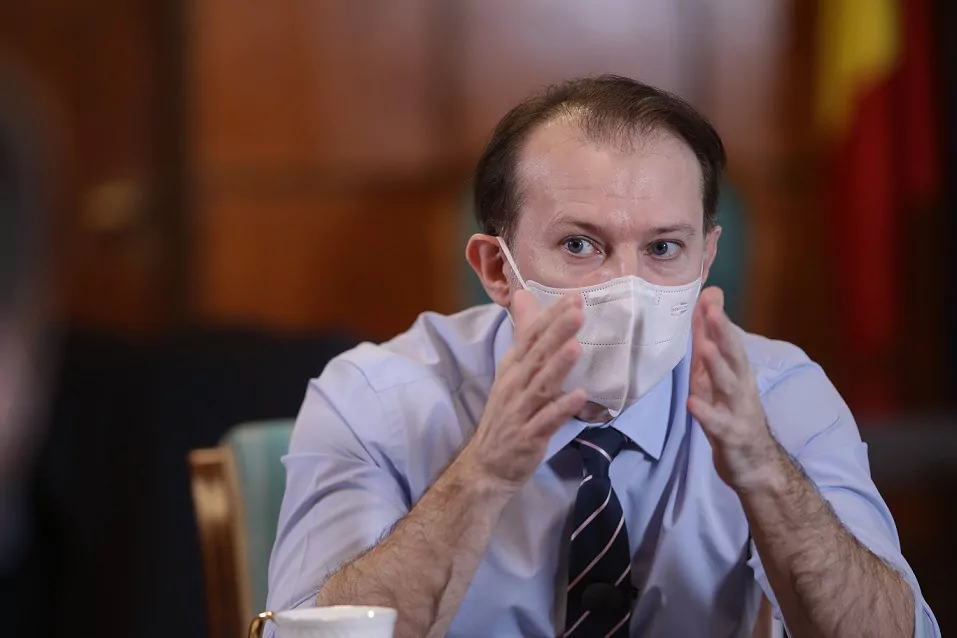The government published the National Recovery and Resilience Plan as officially submitted to the European Commission on Monday. Prime Minister Florin Citu said that the plan is for about 29.2 billion euros, money that will be spent to make about 450 kilometers of highway, to build hundreds of new schools and kindergartens, and on renovating dozens of hospitals. We will have a new hospital in 2024, Citu said.
Urmărește mai jos producțiile video ale Economedia:
- articolul continuă mai jos -
Some of the major objectives in the PNRR:
- 434 kilometers of new highways, with ITS system installed and with modern systems for traffic information and monitoring systems
- 52 power stations for electric vehicles (with 264 charging points – an average of 5 charging points / station).
- 625 hectares of linear forests along the new highway projects
- A new taxation system, especially for heavy traffic in Romania, according to the “polluter pays” principle, including possible incentives for those who own zero / low emission vehicles;
- Increasing by 100% the share of electric / hybrid vehicles in the total fleet by 2026 (compared to 2020 values);
- Renewal of 200,000 cars in the car fleet by 2026 (compared to 2020 values).
- modernizing of 311 km of railway;
- 12.7 km from the new metro network; 32 new subway trains
- 1630 km new water networks – in localities with over 2000 inhabitants
2000 km new sewerage networks in localities with over 2000 inhabitants and 470 km of sewerage networks in those with less than 2000 inhabitants - over 45,000 hectares of forest will be planted
- about 1,000 – 1,500 energy rehabilitation of apartment buildings and about 2,000 rehabilitated public buildings
- Contract for the construction of the gas network in combination with other low-carbon gaseous fuels
- 400 km distribution network for methane and other low carbon gases
- Government cloud – linking all ministries and government agencies into a single network and a single interoperable database
- 8.5 million citizens with an electronic identity card
- 30,000 digitally trained civil servants
- Coverage with high-speed internet access services, at a fixed point of approximately 790 villages in which, according to ANCOM data, the market cannot deliver such services on its own
- reform of tax collection agency ANAF – increasing the share of revenues collected by 3 pp of GDP compared to the average value of 2019 and 2020
- reducing the VAT gap by 5 p.p. compared to the average value of 2019 and 2020
- the creation and operationalization of the National Development Bank, which will be accredited by the Government to implement partner EU funds and by the European Commission to implement partner Invest EU
- At least 3,000 contracts for financing the digitalization of SMEs and digital and technological transformation, through a State aid program
- At least 280 financing contracts through the De minimis Scheme to help Romanian companies in the listing process
- 3,000 km of national cycling lanes, including EuroVelo routes
- New museums to be created and old ones modernized: the National Museum of Jewish and Holocaust History, the Memorial of the Revolution of December 1989 / Timișoara European Capital of Culture, the Prison of Silence in Râmnicu Sărat, the Memorial of the Victims of Sighetul Marmației
- 26 newborn intensive care units/sections fully equipped, including newborn transport ambulance (for regional centers)
- 10 mobile medical units – for areas with limited access to specialized health care services
- Introduction of the Minimum Inclusion Income
- A pilot recruitment system on the European EPSO model for the central government in 2022, followed by replication at the national level based on lessons learned, starting in 2023
- Introduction of a new recruitment system for senior civil servants that prohibits the politicization of positions
What politicians are saying about the plan
Florin Citu:
- The good news: the PNRR was submitted to the European Commission on Monday. It is a very important program for Romania. It was launched when I was Minister of Finance, I was involved from the beginning. We will have a new hospital built in 2024. Transport, education, and health are the main areas of the PNRR
- Why do we also take out loans through PNRR? Romania has a great need for investments, and these loans will only go into investments, not in consumption. The PNRR loans are at a much lower interest rate than normal, almost zero. All investments in the PNRR end in 2026
- The reforming component of the PNRR: Romania needs reforms, and through the PNRR we have created greater transparency related to these reforms. The Public Pension system reform – which will be based on contributions and be sustainable. Justice reform – we fix what others have done wrong. Reform of state-owned companies – we are struggling with the siphoning of public money. Wage reform in the public environment – we will link performance to income.
Dan Barna
- The PNRR has a fair geographical distribution. No one is left behind
- Some of the resources are left to local authorities
- I want to thank Cristian Ghinea for having the liver, the energy, and patience to complete this project, together with his team.
Kelemen Hunor:
- Romania has not had a country plan for a long time. Without exaggeration, we can say that the PNRR is a country plan, extremely balanced, a socio-economic plan that will guarantee prosperity for all

 Sursa Foto: Inquam Photos/ Autor: Octav Ganea
Sursa Foto: Inquam Photos/ Autor: Octav Ganea